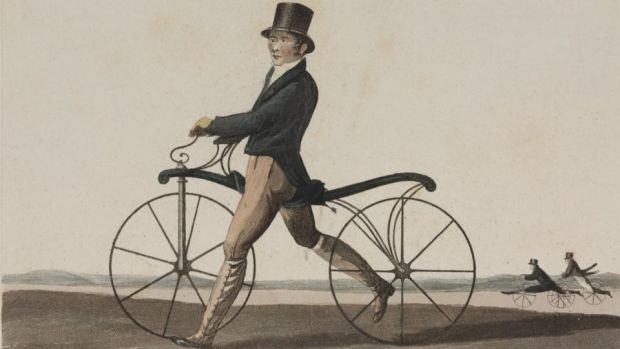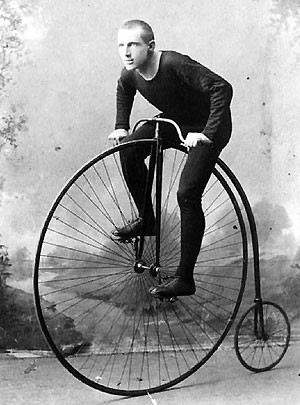What is gearing?
Gearing refers to components of the cycle drivetrain which allow the cyclist to reconfigure the cycle so as to adjust to how they wish to pedal at any given moment. It also plays an important role in how the drivetrain transforms Pedal Force and Power to the rear wheel. In this section, we will focus on the first of these and discuss the drivetrain in a subsequent section.

Why are bicycle’s geared?
The original bicycle was actually intended for the cyclist to have something to sit on while using their feet to essentially “walk.” No pedals. But of course, cyclists quickly wanted more speed.

So pedals were added which connected to the front wheel hub. For each pedal cycle, the front wheel turned one cycle. The faster you pedaled, the faster the front wheel turned and the faster you would go. Think of your experiences riding your first tricycle.
However, there was a problem. You could only turn the front wheel so fast and there was an inherent limitation in your speed based on the size of the wheel. So the solution? You guessed it, bigger wheels.

As the wheels got bigger, the cyclists found themselves seated higher and higher, and while they did get more speed, they also increased the risk of “meet and greets” with the road. So much so that they coined a term for it: “Taking a Header.”
Finally, someone realized the answer to more speed was to transform the bicycle from front to rear-wheel drive. No more big wheels and “Headers.”
With rear-wheel drive, one pedal cycle turns the front chain wheel once, but because of gearing, that may result in the rear-wheel turning several times. So the key to speed is not how big the front wheel is, it is how many times per pedal cycle, the rear wheel will turn. A particular gearing configuration therefore determines the rotation rate of the rear wheel per pedaling cycle, and thereby the cycle speed.
Our next step, then, is to understand how gearing determines how the rear wheel turns.
Next Topic: Direct Drive Gearing Configurations
